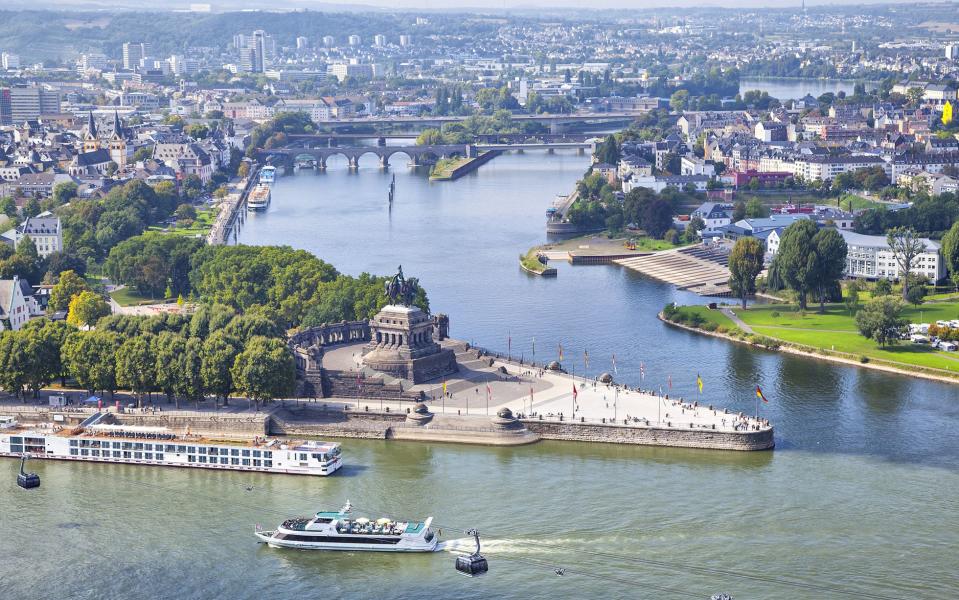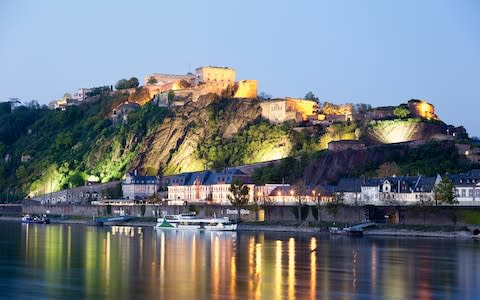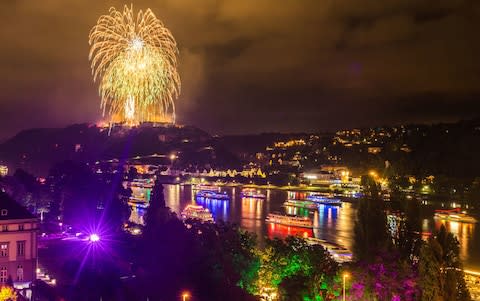Koblenz cruise port guide

Why go?
Located at the confluence of the Rhine and Moselle rivers and dating back to Roman times, Koblenz is one of the oldest cities in Germany and a major wine hub. Part of the Unesco World Heritage Upper Middle Rhine Valley, the city centre brims with green spaces and attractive architecture.
Cruise port location
There are 16 mooring locations in total. Six for cruise ships, some of them are on the Mosel side, and 10 more for river cruises on the Rhine side. Which one you land at depends on which company you are with, but all of them are located close to the Altstadt.
Can I walk to any places of interest?
The city’s docking berths are all situated close to the Altstadt where most of the main sights are located.
Landmarks like the Deutsches Eck and the interactive Romanticum museum are just a few minutes away on foot, and the Ehrenbreitstein is a 20-minute walk or a five-minute cable car ride from the Old Town.
Getting around
Koblenz has a small city centre that’s easily navigable on foot. If you don’t want to walk, there is a special train close to the docks called the “Altstadtexpress”. This takes visitors on a 45-minute tour around the centre of the city for €6/£5.30 (kids under 10 for €2/£1.80).

Family tickets are also available, and the train leaves from the Basilika St. Kastor Church, near to the Deutsches Eck.
What can I do with a half a day in Koblenz?
The best starting point is Münzplatz, where the Romans founded the “fort at the confluence” (“Castellum apud confluentes”), which gave Koblenz its name.
Today the square hosts the baroque Münzmeisterhaus, where coins were once minted, and the Kunstgässchen (see shopping below).

Head towards Gorresplatz and you’ll pass the distinctive, onion-domed Liebfrauenkirche (Church of Our Lady), which dates from the fifth century. It has a picturesque Gothic choir and a number of significant furnishings from between the 15th and 18th centuries. Opposite is the much-loved Schängelbrunnen fountain, whose cheeky statue spits water intermittently across the courtyard.
The History Column fountain at Gorresplatz – installed in 1992 to celebrate the city’s 2,000 year anniversary – is arguably more interesting as its surrounding sculptures depict a timeline of local history: rowboats carrying wine to symbolise the Roman settlement, and merchants to represent the trade of the 13th and 16th centuries, for example.
Nearby, the sleek, modern Romanticum, designed by German-Dutch architects Benthem-Crouwel, showcases the history and life of the Middle Rhine Valley.
North of here is the famous Deutsches Eck, where the Moselle flows into the Rhine; climb the steps up to the 120ft-high statue of Emperor Wilhelm I for stellar views, then catch the Koblenz Cable Car, the biggest aerial tramway in Germany, to the Ehrenbreitstein fortress, which offers excellent views, a Prussian Baroque palace, and the Koblenz National Museum.
What can I do with a bit longer?
Four miles from the centre of Koblenz, the handsome Stolzenfels Castle was built in the 19th century from the ruins of a 13th century fort.

Designed by architect Karl Friedrich Schinkel, it’s set inside a dense forest and has wonderful views across the city and surroundings, plus fresco-filled halls and chambers and a pleasant park and gardens. The castle is accessible by bus line 650 towards Boppard.
Eat and drink
Koblenz’s Weindorf “wine village” – actually a restaurant – is located to the south of the Altstadt, in a picturesque spot on the banks of the Rhine. It consists of four half-timber pubs and the smallest vineyard in Koblenz. There’s an open-air dining area, entertainment every evening and traditional dishes to try are Saumagen (pig’s stomach), Flääschknepp (meatballs) or Knödel (dumplings).
Don’t leave the Koblenz without…
The main shopping street is Löhrstraße, although the stores here are mostly chains. Smaller and more independent shops can be found around the Altstadt around Entenpfuhl, and the picturesque Kunstgässchen am Münzplatz, which offers handicraft goods such as textiles, ceramics and musical instruments. One of the most popular gifts to pick up here is a bottle of the local Riesling.

Need to know
Safety
Koblenz is mostly a very safe city and visitors don’t need to be aware of any specific areas or problems. Note that the Old Town can be very busy with partying and occasionally drunk people at weekends.
Best time to go
Between April and October are the warmest months. There are a lot of events in April specifically, with the largest – the Koblenzer Summer Festival – taking place over three days each July and culminating in an impressive firework display on the Rhine.
Clousures
Stores are closed on Sundays, and museums are closed on Mondays, as is the norm in Germany.

